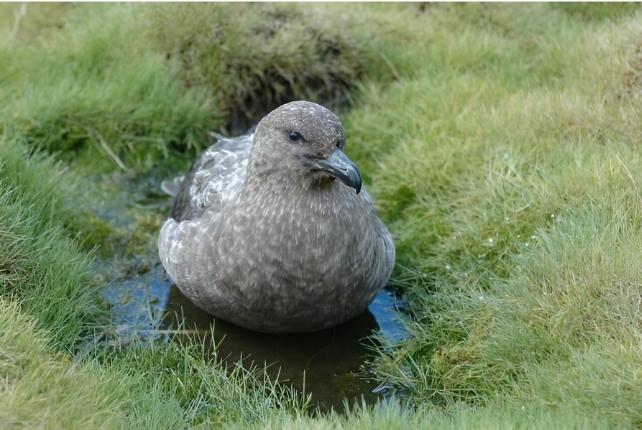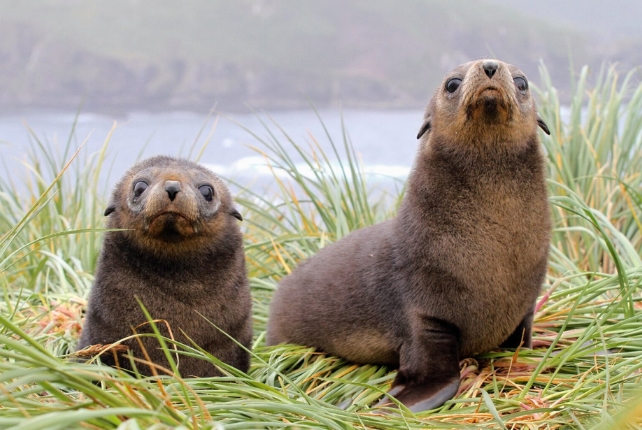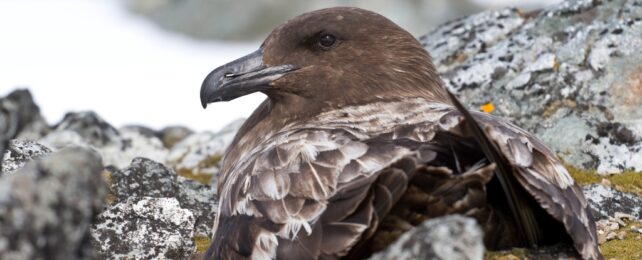Highly pathogenic avian influenza (HPAI) has been confirmed in the Antarctic region after brown skuas on Bird Island, South Georgia, tested positive for the virus. These are the first identified cases of avian influenza in the Antarctic.
Researchers have previously expressed concern about the devastating impact an outbreak could have on many wildlife species in the Antarctic. Government and research teams in the area are taking action to monitor and limit the disease's spread, including putting most animal handling work on hold.
Avian influenza, or bird flu, has been around for a long time. But HPAI H5N1 has one recently emerged as a highly pathogenic strain, becoming a subject of global concern over its high mortality rates.
Potentially symptomatic birds and unexplained deaths were reported to the British Antarctic Survey (BAS), so staff on Bird Island collected samples for analysis, and HPAI H5N1 was detected.

Since the current outbreak of H5N1 HPAI began, huge numbers of seabirds have died throughout North and South America, the Atlantic and Pacific Oceans, as well as in the southern part of Africa.
Numerous species of seabirds, penguins, and other birds live in the Antarctic, many of which are not found anywhere else on Earth. These birds are frequently densely populated, and have limited natural immunity to avian influenza due to a lack of historical exposure, making them extremely vulnerable to infection.
Earlier this month, Antarctic research teams announced they were implementing extra measures like protective clothing and masks when working close to seabirds to avoid transmitting the highly contagious virus to wildlife themselves.
Infected birds' droppings, feathers, and respiratory secretions spread avian influenza so the virus could quickly travel from Bird Island to the rest of the Antarctic region, resulting in widespread outbreaks and massive bird deaths.
Despite being primarily a virus of avian hosts, the current outbreak has also affected mammals in both land and sea environments.
A risk assessment published in September by the Antarctic Wildlife Health Network indicates skuas, gulls, fur seals, and sea lions are most at risk of HPAI infection. Antarctic fur seals (Arctocephalus gazella) on Bird Island are already facing population decline due to lack of food that appears to result from rising sea temperatures.

The return of birds from their migration to South America, where there are a large number of HPAI cases, is likely what carried the virus to Bird Island.
Large outbreaks have been reported in both Chile and Peru since HPAI arrived in South America, and it has spread over 6,000 kilometers in as little as three months, following the Pacific coast of South America to its southernmost tip off Tierra del Fuego.
More than 20,000 sea lions and over half a million seabirds have died in Peru and Chile alone as a result of HPAI H5N1. This virus has recently spread to the Atlantic coast of Argentina, with cases discovered in sea lions all the way from Tierra del Fuego to Buenos Aires.
Although waterfowl, gulls, and shorebirds play a central role in the avian influenza viral cycle in the wild, the virus appears to be easily transmitted between different species of birds. Whether or not the virus is harmful to them depends on the virus strain and the bird species. Because of their ability to fly great distances – migratory birds can easily spread viruses between countries.
One way the virus spreads is when farm birds come into direct contact with wild birds, which can lead to healthy birds being culled to contain an outbreak. And infections in poultry are often associated with cases appearing in humans.
Human infections from bird flu viruses are extremely uncommon, though the World Health Organization (WHO) states, "Studies are underway to identify any changes in the virus that may help the virus to spread more easily among mammals, including humans."
Authorities are monitoring the outbreaks closely and providing advice and updates. The CDC explains, "the current risk to the public from HPAI H5N1 viruses remains low."
More than 898 human infections with HPAI H5N1 have been recorded since 1997, sometimes causing severe illness and death. That doesn't mean HPAI H5N1 can spread among us from a human case.
Viruses are complex, and as the WHO reports, "sustained human-to-human transmission of the viruses from these cases is currently considered unlikely."
